The art of Haiti offers a compelling reflection of its culture and struggles. Through vibrant paintings, sculptures, and textiles, it serves as a profound testimony to the Haitian spirit, showcasing the community’s resilience and hope.
These artistic expressions go beyond aesthetics; they embody the heartbeat of a people and provide insight into a rich, complex history. Engaging with Haitian art makes you an ally in celebrating and uplifting a nation’s narrative.
Let the art move you and be inspired to support the vibrant community behind it.
Haitian Art Uniqueness
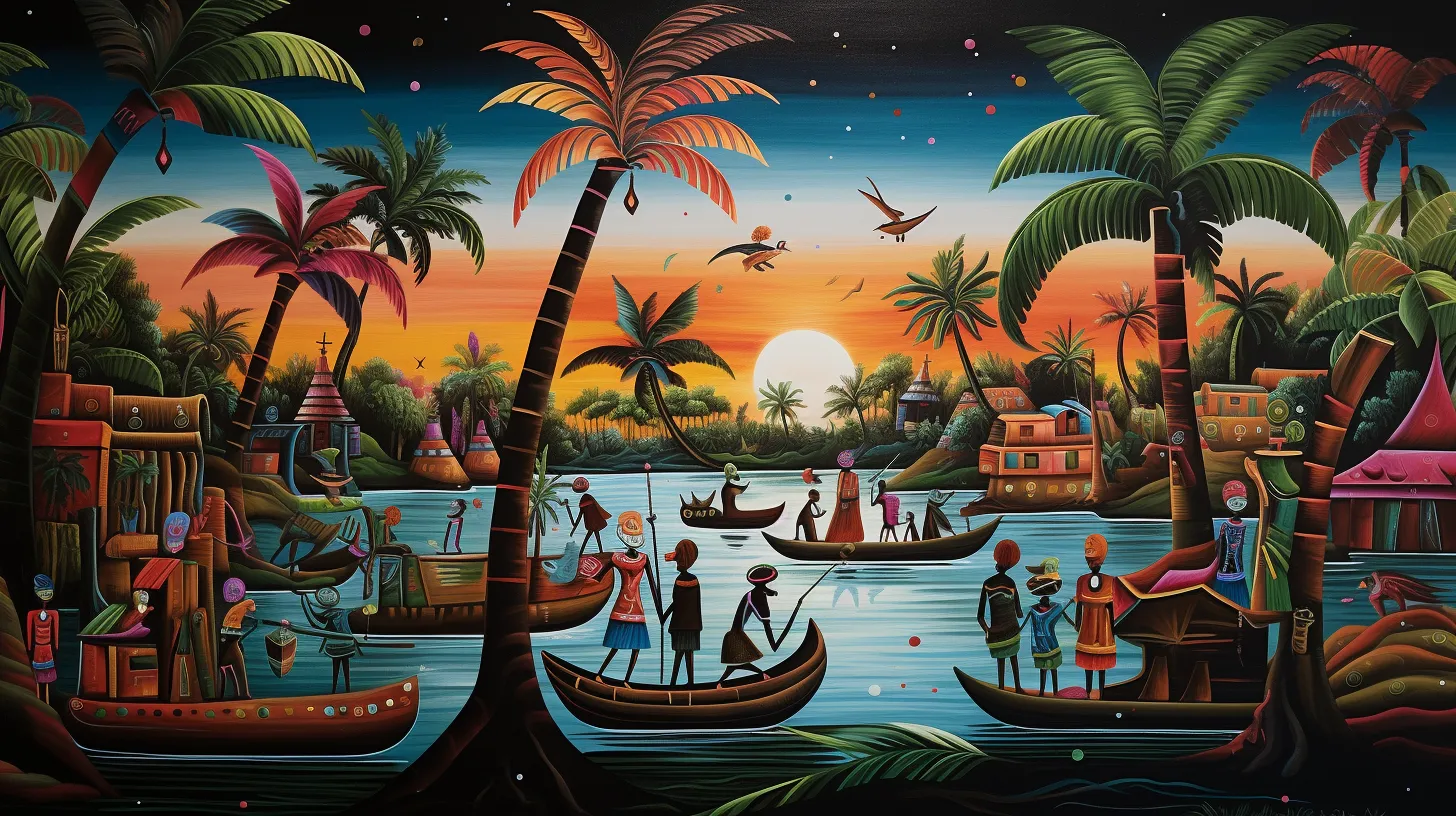
Why don’t you explore the singular characteristics that make Haitian art a true reflection of the nation’s soul and resilience?
Immersing yourself in Haitian traditional art, you’ll discover a tapestry woven with vibrant threads of history, spirituality, and the indefatigable human spirit. This unique art form brims with life, telling stories that resonate with the heartbeats of generations.
Visualize, for instance, the voodoo flags, shimmering with sequins and beads, each stitch a testament to the syncretic beliefs and ancestral wisdom of the Haitian people. Or ponder the transformed recycled oil drums, meticulously chiseled into intricate designs, revealing how resourcefulness blossoms into beauty.
In the radiant paintings of the Saint Soleil school, you’ll find unbridled joy and mystical depth. These works aren’t mere decorations but dialogues—between the artist and the divine, between the observer and the observed. You’re not just looking at art; you’re participating in a sacred exchange that uplifts and nurtures.
As you serve and support, remember that each piece you encounter is more than an object; it’s a piece of Haiti’s soul, an echo of resilience that continues to inspire and guide. Embrace the art, and in turn, let it transform you.
Painting Traditions
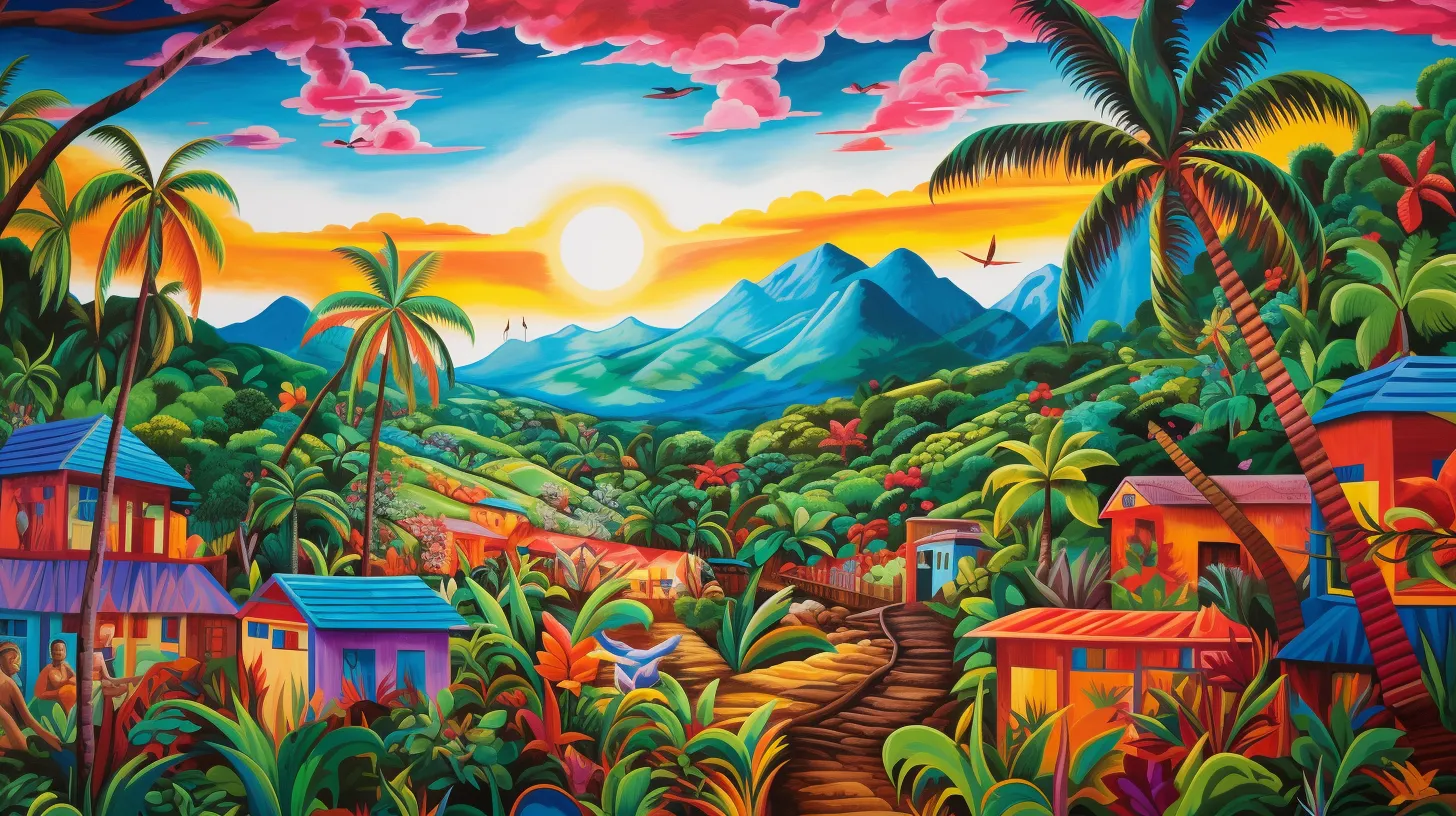
While you delve into the heart of Haitian art, you’ll find that the country’s painting traditions are a vivid testament to its cultural complexity and artistic innovation.
Traditional Haitian art bursts with vibrant colors that mirror the spirit and passion of its people. The landscapes and cityscapes you’ll encounter in these paintings aren’t just scenes; they’re stories woven in hues as lively and diverse as Haiti itself.
Artists like Rigaud Benoit and Wilson Bigaud have become synonymous with the nation’s artistic tapestry. Their canvases are more than mere expressions; they serve as chronicles of Haitian life, capturing the soul of the cities and the serene beauty of the beaches and forests.
Through their work, you’re invited to see Haiti through a lens that highlights its dynamic culture.
Castera Bazile’s contributions to this rich tradition further illustrate the depth of Haitian creativity. Through their art, these maestros provide a window into a world where every stroke and color choice is deliberate, each piece a vehicle for social impact, and every creation a step toward the betterment of their community.
As you engage with Haitian painting traditions, you’re not just observing—you’re participating in a legacy of resilience and beauty.
Sculpture Techniques
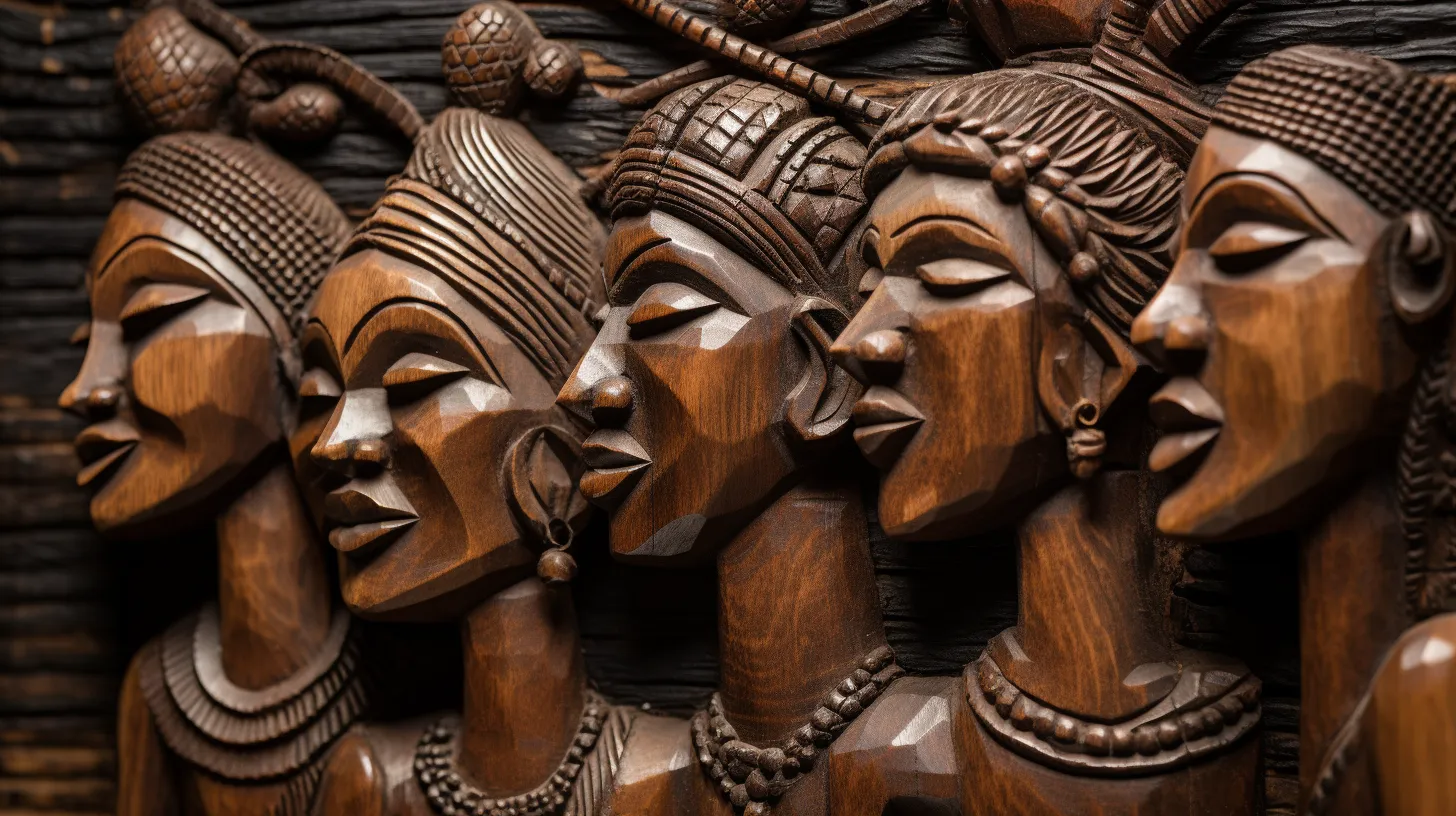
After exploring the colorful canvases of Haitian painting, you’ll now discover how local artists transform recycled materials into intricate sculptures with techniques that are as innovative as they’re environmentally conscious. These creations aren’t just a type of artwork; they’re a testament to a culture that finds beauty and potential in the most unlikely places.
Haitian sculpture, particularly the famed Haitian Steel Drum Sculpture, is created using discarded oil drums. This eco-friendly practice not only cleans up the environment but also provides a durable canvas for artwork that speaks to the heart.
Artists in Croix-des-Bouquets, a commune known for its metalwork, painstakingly cut, hammer, and emboss these drums to depict scenes that capture the essence of Haiti’s cities, beaches, and lush forests.
Beyond metal, Haitian wood carvings are another showcase of the nation’s artistic diversity. Crafted from natural materials, these carvings often feature motifs steeped in voodoo and mythology, connecting you to Haiti’s spiritual roots.
With each chisel stroke, the wood whispers stories of resilience, turning natural resources into cultural treasures.
As you immerse yourself in the world of Haitian sculpture, you’re not just an admirer; you’re a participant in a cycle of sustainability and creativity that uplifts communities and celebrates an enduring spirit.
Metalwork Craftsmanship
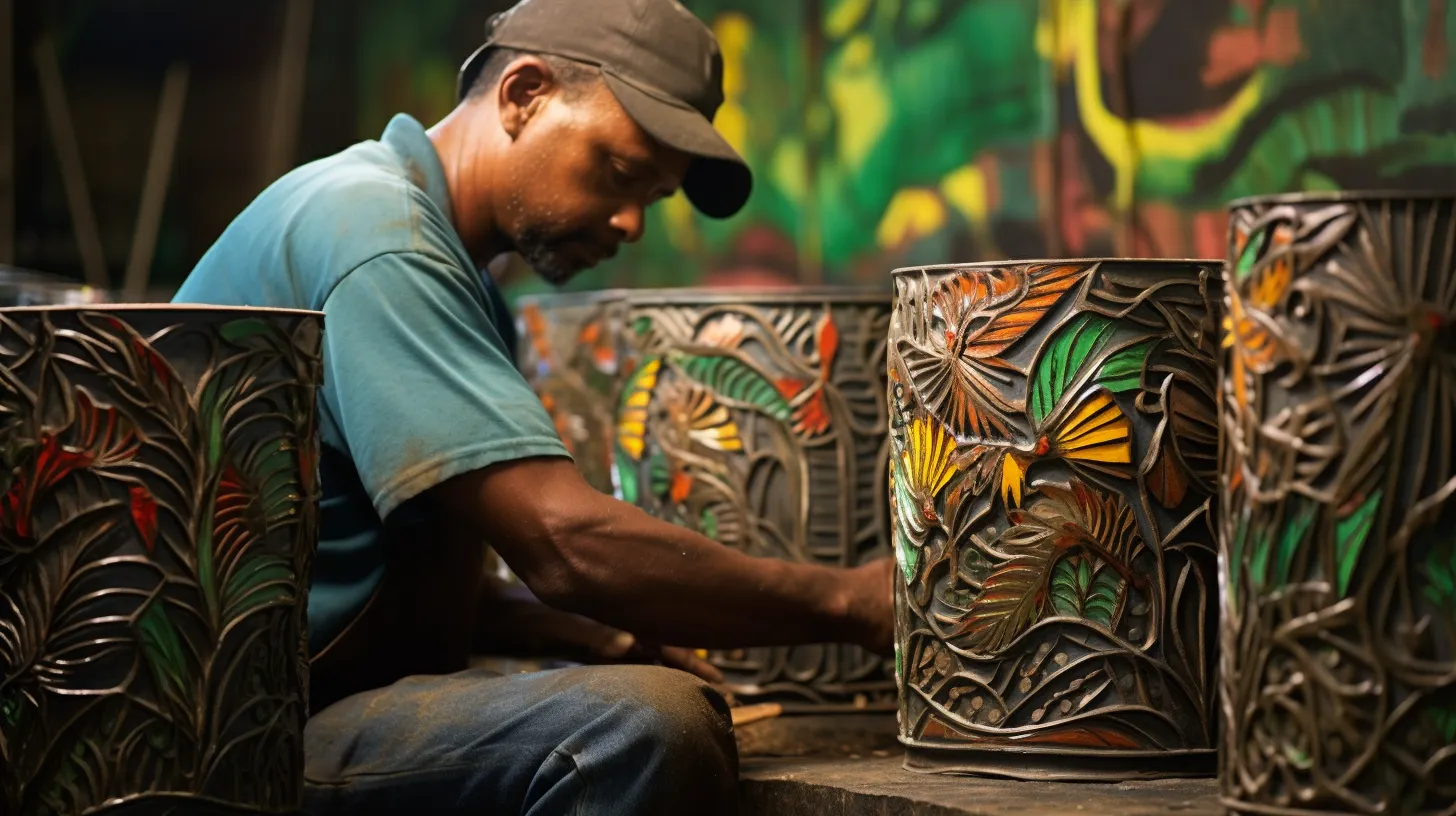
Every piece of Haitian metalwork you encounter embodies a story of ingenuity and tradition, crafted with skills passed down through generations.
When you admire this artwork, you’re not just observing a piece unique to Haiti; you’re witnessing the resilience of a culture that thrives in transforming the mundane into the magnificent.
The art of Haiti, especially its metalwork craftsmanship, is a testament to the human spirit’s ability to create beauty from the simplest of materials. Imagine the skilled hands of Haitian artists repurposing the humble beginnings of an oil barrel, a symbol of industry and commerce.
They flatten and compress these barrels with nothing more than chisels and hammers, turning them into intricate wall hangings and sculptures that speak volumes of the island’s spirit. From delicate floral subjects to the wild contours of animal scenes, each piece narrates a part of the Haitian collective consciousness.
As you support this vibrant facet of Haitian art, you’re not just acquiring a unique artifact; you’re also honoring the unwavering dedication of artists who breathe life into recycled metal. Your appreciation fuels their continued practice, ensuring that the heritage of metalwork craftsmanship in Haiti remains strong and influential.
Notable Haitian Artists

You’ll discover that many artists contribute to Haiti’s rich tapestry of creativity, each bringing their own unique vision and style to the flourishing art scene.
Hector Hippolyte and André Pierre stand out among them as titans of Haitian art, whose works have a strong Vaudou influence. These artists, along with Castera Bazile, Wilson Bigaud, and Rigaud Benoit, form a venerated first generation that drew inspiration from their cultural heritage and spiritual beliefs.
In the Artibonite department, Saincilus Ismaël emerged with a distinctive style, blending the mystique of Byzantine art with local themes. His influence extended to Délouis Jean-Louis and Alix Dorléus, the latter depicting the rhythms of daily life in the Artibonite Valley with vibrant authenticity.
The Centre d’Art in Haiti, founded by DeWitt Peters, has been a crucible for talent, nurturing the skills of countless Haitian artists. Among its alumni, Ernst Louizor stands as one of Haiti’s finest impressionist painters, his work capturing the essence of Haitian life with a gentle touch.
His exhibitions across Europe and the United States have brought Haitian art to an international audience, continuing the legacy of Toussaint Louverture and the second generation of artists who represent the enduring spirit of Haiti.
Revolution-Inspired Art
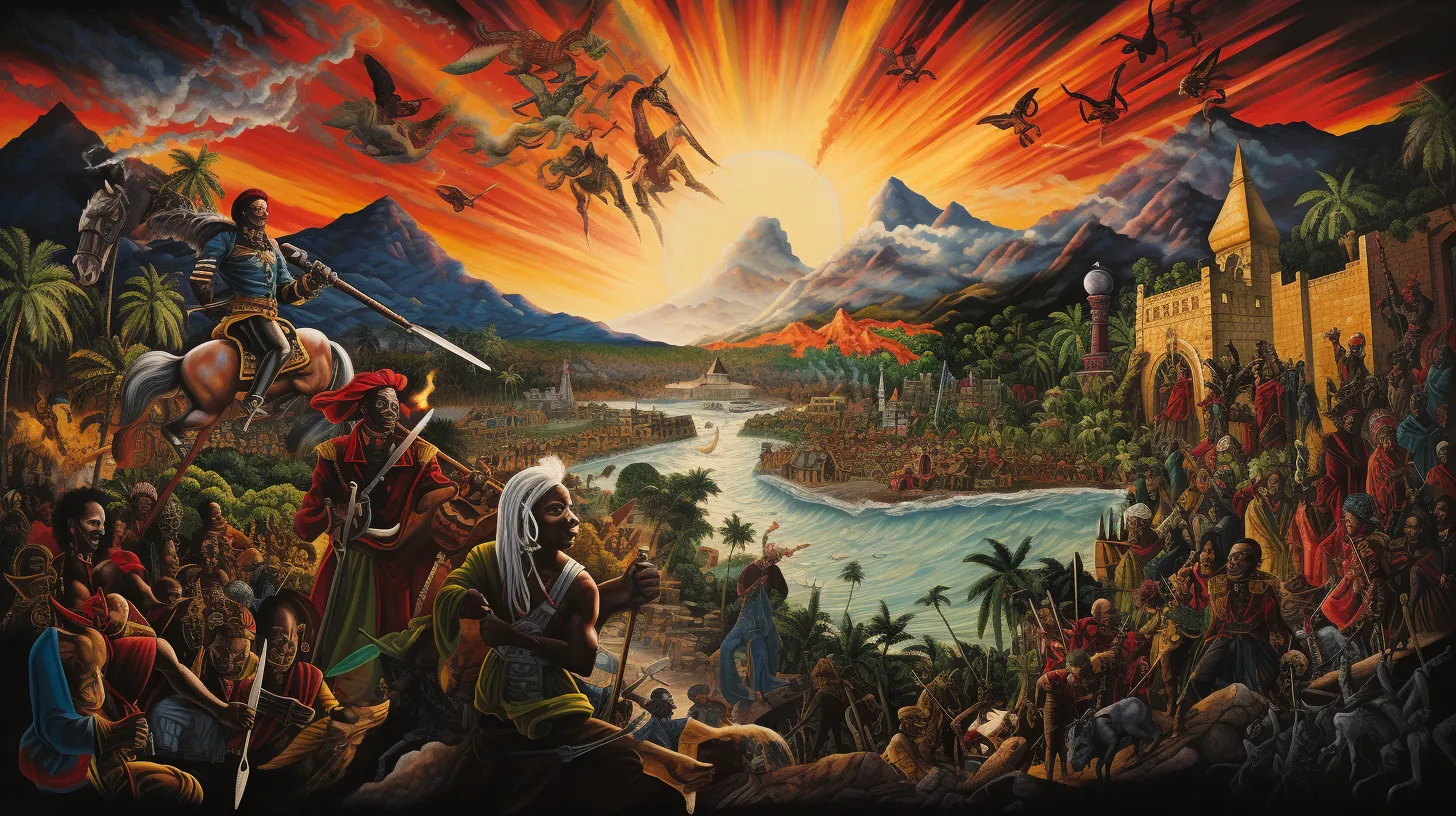
While exploring the vibrant tableau of Haitian art, you’ll encounter powerful imagery that draws its intensity from the country’s revolutionary past, often manifesting in the vivid portrayal of historical heroes and Vodou symbolism.
You’ll see revolution-inspired art seeping through canvases as artists commemorate specific spirits that resonate with the strength and resilience of the Haitian people. This subset of Haitian art is a testament to a culture that has survived oppression, uprising, and even a devastating earthquake yet remains unyielding in its expression.
The spirit of Haitian culture pulsates in every brush stroke that honors revolutionary figures like Toussaint Louverture. These artworks aren’t mere depictions; they’re an homage, a rallying cry that echoes the unbreakable will of an entire nation.
As you delve deeper, you’ll find the sacred Vodou flags, intricate and colorful, each stitch a narrative of identity and belief, each flag a beacon of the community’s collective soul.
Your participation in Haitian art, particularly the works that drew inspiration from the revolution, is more than just an aesthetic experience; it is an act of solidarity. By appreciating and supporting this art, you contribute to the ongoing story of a people who turn adversity into a wellspring of creativity.
Art Historical Overview
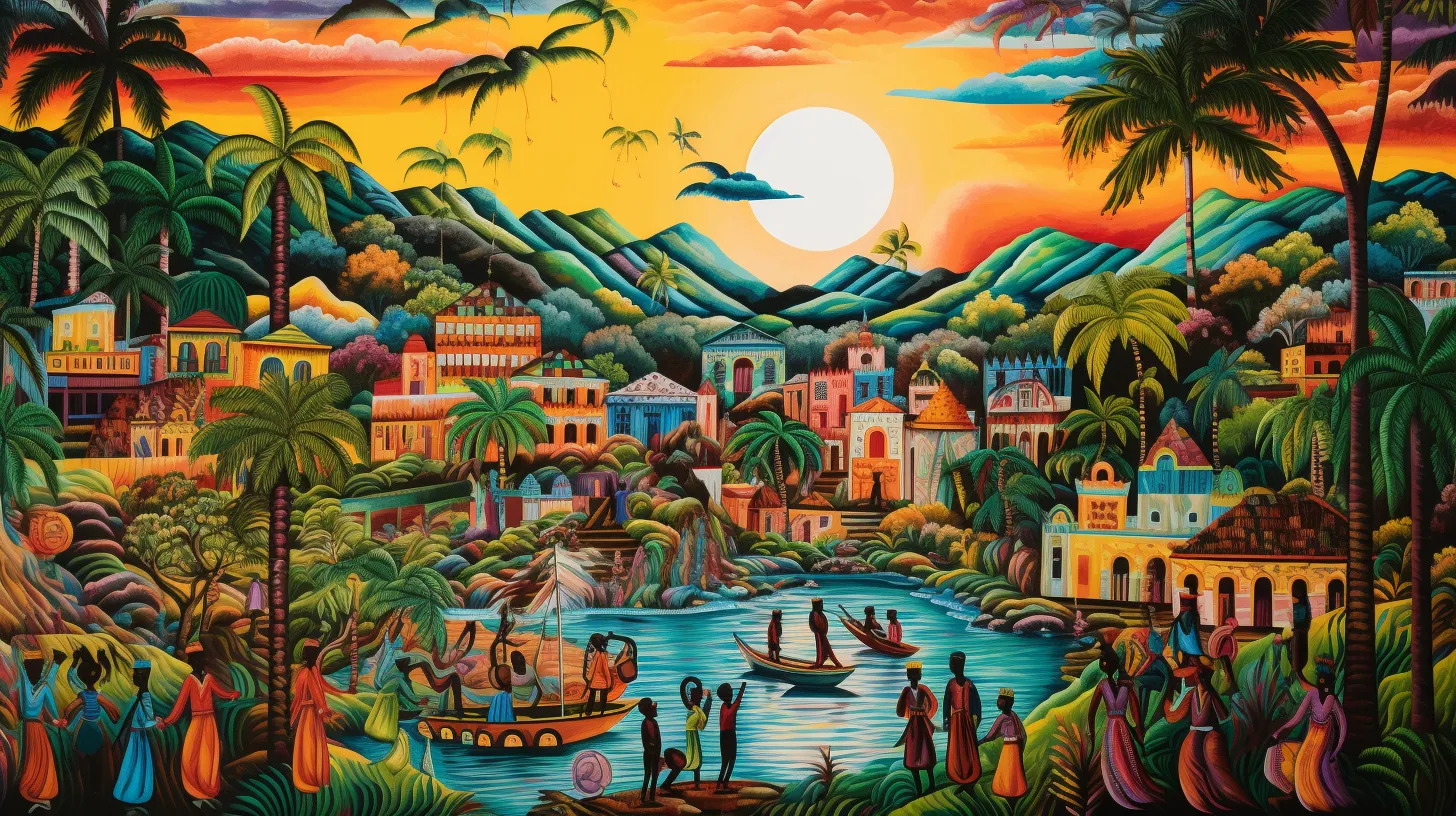
As you explore Haiti’s artistic legacy, you’ll find that its history is as layered and complex as the vibrant tapestries hanging in its galleries. Haitian art, a vivid tapestry woven from the daily life and spirituality of the Haitian people, reflects a unique synthesis of influences.
The West African people, brought to Haiti through the travails of history, infused their rich traditions with the indigenous Arawakian culture, birthing a visual language that’s distinctly Haitian.
Haitian cultural expressions manifest in human forms that dance across canvases, their contours bold and colors striking, narrating tales of resilience and hope.
You’ll notice that paintings in Haiti are more than just ornaments; they are the national soul’s storytellers, created by local artists whose skillfully capture the spirit of Caribbean vibrancy and religious fervor.
Moreover, Voodoo, integral to Haitian identity, finds its artistic counterpart in the creation of Voodoo flags—each stitch a testament to faith and heritage.
When serving others through the appreciation and promotion of Haitian art, you’re not just supporting the artists; you’re preserving a narrative woven into the very fabric of Haiti’s enduring spirit.
Diverse Artistic Expressions
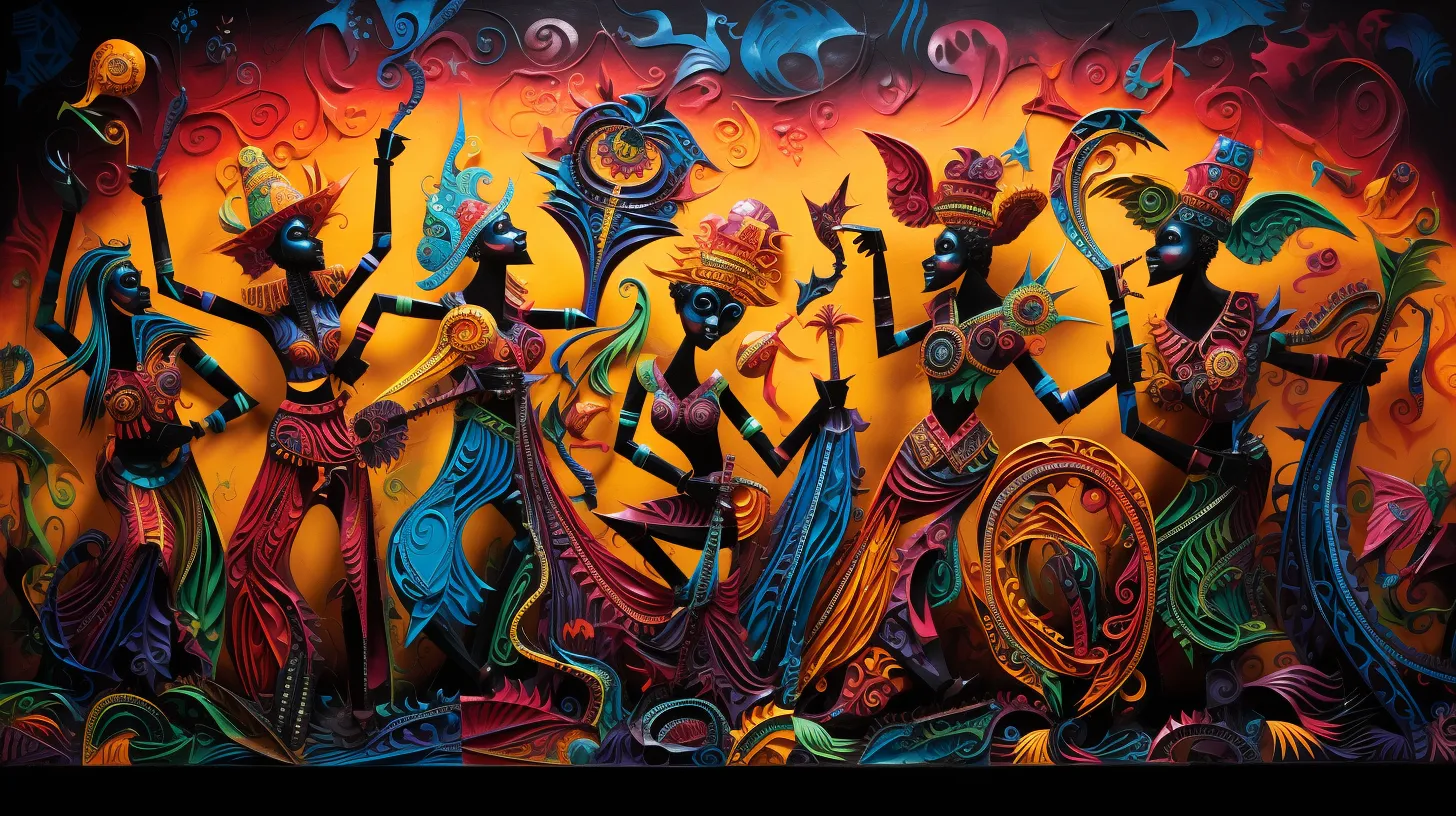
Exploring Haiti’s artistic landscape, you’ll discover a myriad of forms, from vivid paintings to dynamic sculptures, each telling its own story of heritage and identity. As you immerse yourself in Haitian art, you’ll feel a powerful connection to the spirit and resilience of its people. The artwork isn’t just a feast for the eyes, but a symbol of hope and strength.
When you enter an art gallery filled with Haitian works of art, you experience:
- Paintings: Layers of bold, vibrant colors that capture the essence of Caribbean life.
- Voodoo Flags: Intricate patterns of colored sequins that shimmer with cultural significance
- They’re more than just art; they’re a bridge to understanding the syncretic beliefs of the Haitian people.
- Each stitch is a prayer; each color is a representation of the divine.
The form of Haitian creativity extends to international art scenes, inspiring collectors and philanthropists alike.
Within the realm of sculptures, you’ll find:
- Recycled Metalwork: Ingenious transformations of discarded materials into breathtaking art
- Clay Creations: Earthy textures molded with precision, bringing stories of local life to the fore.
- These pieces aren’t simply to be admired; they’re a call to action, a reminder of the enduring human spirit.
- Every curve and cut echoes the profound narrative of a nation’s undying hope.



